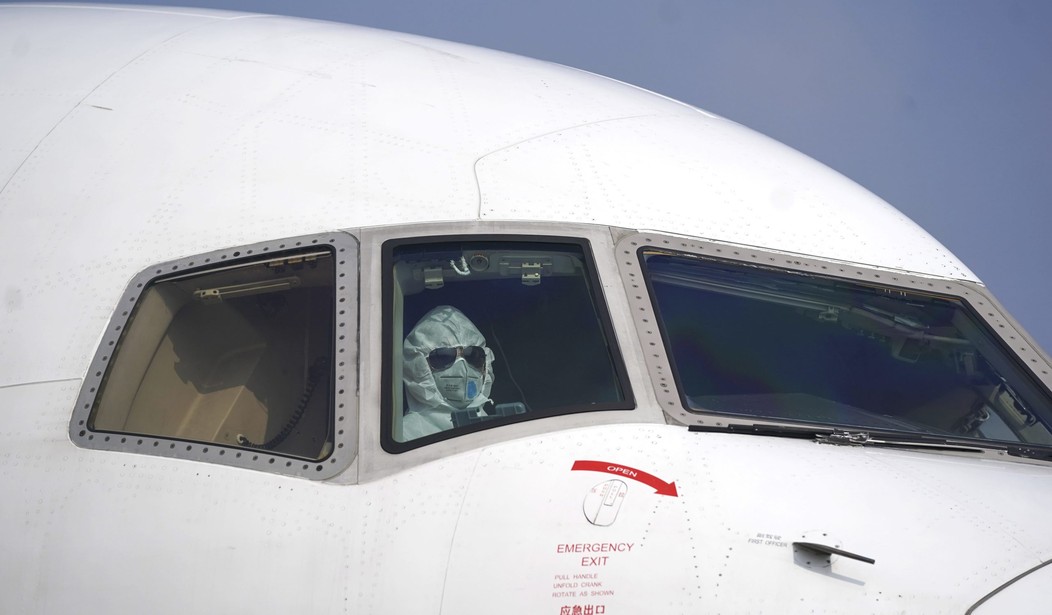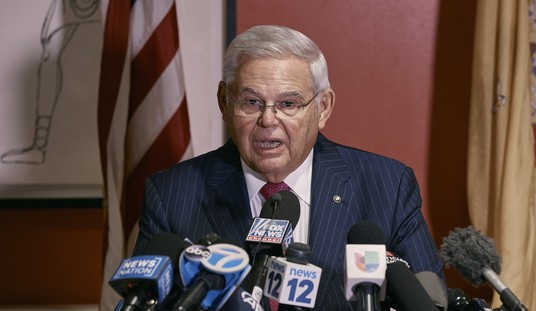It isn’t too early to think about what the world will look like after the current pandemic has passed.
If you’ve been thinking that this Chinese coronavirus — and its inevitable sequels — is as much a national security threat as it is a public health issue, then we’re on the same page. From how we source vital medications and medical devices, to the just-in-time inventories and long supply chains of both consumer and industrial items, and perhaps especially to the quality of the goods we buy, all are now in focus as national security issues, even to many who had previously given these things little or no thought.
Three more-typical national security challenges from recent history might help us focus our thinking on what to do, what to change, and what to add after the dust has settled. Coronavirus caught us with our pants down, and not for the first time. In my examples, we were also wise enough to put new systems in place to avoid repeat examples of finding ourselves sans trou in a crisis.
Pearl Harbor

(U.S. Navy photograph.)
Seemingly out of nowhere, 350 Imperial Japanese warplanes descended in two waves on Pearl Harbor and Hickam Field, killing 2,403 Americans and wounding 1,178 more. Of the eight battleships lined up on Battleship Row, four were sunk and the other four damaged. Three cruisers, three destroyers, and three other ships were damaged. We lost 188 aircraft outright and another 159 were damaged. Japanese losses, thanks to having achieved complete surprise, were minimal. They lost 64 killed, 29 planes lost, 74 more damaged, and a handful of midget submarines lost.
The Imperial Japanese Navy forces of six fleet aircraft carriers, two battleships, two heavy cruisers, 23 submarines, and 18 escort ships and oilers all returned to Japan unscathed.
Few in America thought the Japanese were capable of such an audacious attack over such long distances. More than 3,000 dead and the sunk or burning ruins of the pride of our Pacific fleet was an expensive way to learn better, but we haven’t suffered a surprise air raid by a hostile power since.
After Pearl Harbor, we got serious — some would even say overreliant — on signals intelligence (SIGINT). From covering our airspace with the most advanced radars in the world, to dotting the oceans’ chokepoints with acoustic listening devices, to filling the Earth’s orbit with spy satellites, we put every system in place we could to prevent another Pearl Harbor. For what it’s worth, I truly believe our ability to keep an electronic eye on troop and naval movements around the globe, 24/7, went a very long way towards forestalling the Soviets from launching a surprise Third World War.
And yet, it wasn’t even nine years after Pearl Harbor that we got caught with our pants down again…
The Korean War

South Koreans civilians flee from North Korean invaders, 1950.(Wikimedia Commons.)
June 25, 1950: A surprisingly well-trained and well-armed North Korean army smashed through the 38th parallel dividing North from South. With Stalin’s blessing and a promise of support from Beijing, Nork Communist boss Kim Il-sung felt confident he could beat the tiny and underequipped South Korean army, especially since American forces had left the peninsula in the months prior.
The attack itself wasn’t a total surprise. The CIA and others had noted southward troop movements in the North, and according to a new-to-me factoid on Wikipedia (I know, I know), “Syngman Rhee repeatedly expressed his desire to conquer the North, including when U.S. diplomat John Foster Dulles visited Korea on 18 June.”
But even if we had somehow obtained perfect knowledge of North Korea’s abilities and intentions, we still would have been caught with our pants down. We’d militarily left South Korea almost entirely to its own devices, and the troops we did have available to muster in Japan were undertrained and underequipped occupation forces. The result was the disaster known as Task Force Smith.
540 American soldiers from the Japan-based 24th Infantry Division were hurried across the water and then north to engage the Norks. Task Force Smith was routed, losing 180 dead, wounded, or taken prisoner. It was only the near-miracle of U.S./U.N. forces finally holding the line at the Pusan Perimeter that allowed South Korea its continued (and in recent decades, very successful) existence.
The lesson learned from the Korean War was: Don’t tempt the Commies into war by being weak on the frontlines in peacetime. That attitude, that resulting defense posture of keeping two heavy armored corps in West Germany, and annual training exercises like REFORGER also helped keep the peace between NATO and the Warsaw Pact for the next 40 years, even though it was (ahem) unevenly applied throughout various American administrations.
Even so, we still got caught with our drawers around our ankles on one lovely September morning…
The Terror Attacks of 9/11/2001

(Collection of unattributed photographs of the September 11th terrorist attack on the World Trade Center, New York City)
It’s been a long time since I’ve written about what happened that day. Living through it virtually via television and the then-new blogosphere was quite enough. Readers here are old enough to have their own memories of the day that large-scale Islamic terrorism came to our shores. Those attacks forever altered the greatest skyline in the world and came too close for comfort to smashing either Congress or the White House. al Qaeda launched what amounted to cruise missiles, loaded to the gills with American civilians, at NYC’s Twin Towers and even at our military’s supreme headquarters.
But on that day we learned two lessons, both vital to preventing another 9/11.
The first lesson was the obvious one: Our overreliance on SIGINT, and our underdeveloped human intelligence (HUMINT) apparatus. Forget for the moment the big wars in Afghanistan and Iraq, which have proven of dubious utility. That’s thanks in no small part to a lack of continuity between the Bush and Obama administrations, and not enough strategic-operational thinking in any either of them. The important war since 9/11 has been the intelligence war, the war in the shadows, the spycraft game for HUMINT. A spy satellite can’t see into the minds of a terror cell; for that, you need tough/smart men on the ground, close enough to see the sweat on their brows.
Broadly speaking, SIGINT is more useful for preventing wars between nations, but HUMINT is the vital intelligence asset for preventing terrorist attacks. We got much more serious about HUMINT after 9/11, and although I wish we’d get even more serious, we have yet to suffer another 9/11.
The second lesson is both widely known but perhaps less appreciated: What happened on United Airlines Flight 93 in the skies above Pennsylvania. One of four civilian airliners hijacked on 9/11, its passengers were the first Americans to correctly assess and act on a world changed when two other airliners struck the Twin Towers. Recognizing that they were not the victims, but the weapons to be used against their own countrymen, the passengers of Flight 93 formed a motley assault team and executed a successful spoiling attack on their hijackers. They sacrificed their lives to save countless others.
A terrorist can come from anywhere, but we learned to our sadness and to our swelling pride on 9/11 that a counter-terrorist can come from anywhere, too.
But a threat vector has re-emerged, one we once thought we had all but beaten: Infectious disease. And the Wuhan coronavirus caught us again all squishy-pantsed…
China: First World Trade Partner/Third World Health
We once might have smugly laughed off China’s wet markets as a Third World aberration, a medieval leftover, somehow still lingering around as a quaint vestigial bit of Chinese culture in a rapidly developing country. What we’ve learned in recent months, however, is that those wet markets are an even more serious security risk than Osama bin Laden looking for American flying schools from his computer in a secret location somewhere in Afghanistan. The viral threat emanating from China’s sub-Western health practices has at least an outside chance of killing more American civilians than soldiers have died in all of our wars. That’s how serious the threat is.
And yet I’m reminded of this classic exchange from Serenity:
I’ve been keeping a wary eye on China for a long time, yet even I didn’t know how almost wholly reliant we’d become on Beijing for our supply of medicines. In recent weeks you might have heard a lot about Zoom, a video conferencing app Americans have come to rely on more and more during this shut-in time. Well, guess what: “Zoom, one of the most anticipated tech IPOs of the year, has one key profit driver: engineers in China.” Does that mean Beijing has the baked-in ability to listen in? I don’t know, but I’d also rather not take more chances.
So here we are in a surprisingly virulent new era, one with perhaps enough deadly dynamism to force structural changes deeper and more meaningful than after 9/11. And yet we find ourselves, in ways even the best-informed among us didn’t fully appreciate until now, intertwined, entangled, and reliant on the very source of this new plague.
It’s too soon to completely comprehend what new systems we need to put in place to help avoid or subvert the next pandemic, but the lesson we need to learn is already clear. So long as Second World Communists rule over a country with Third World health attitudes locked into a First World trade regime, “Made in China” isn’t just a stamp on trade goods: It’s a standing invitation to our own destruction.










